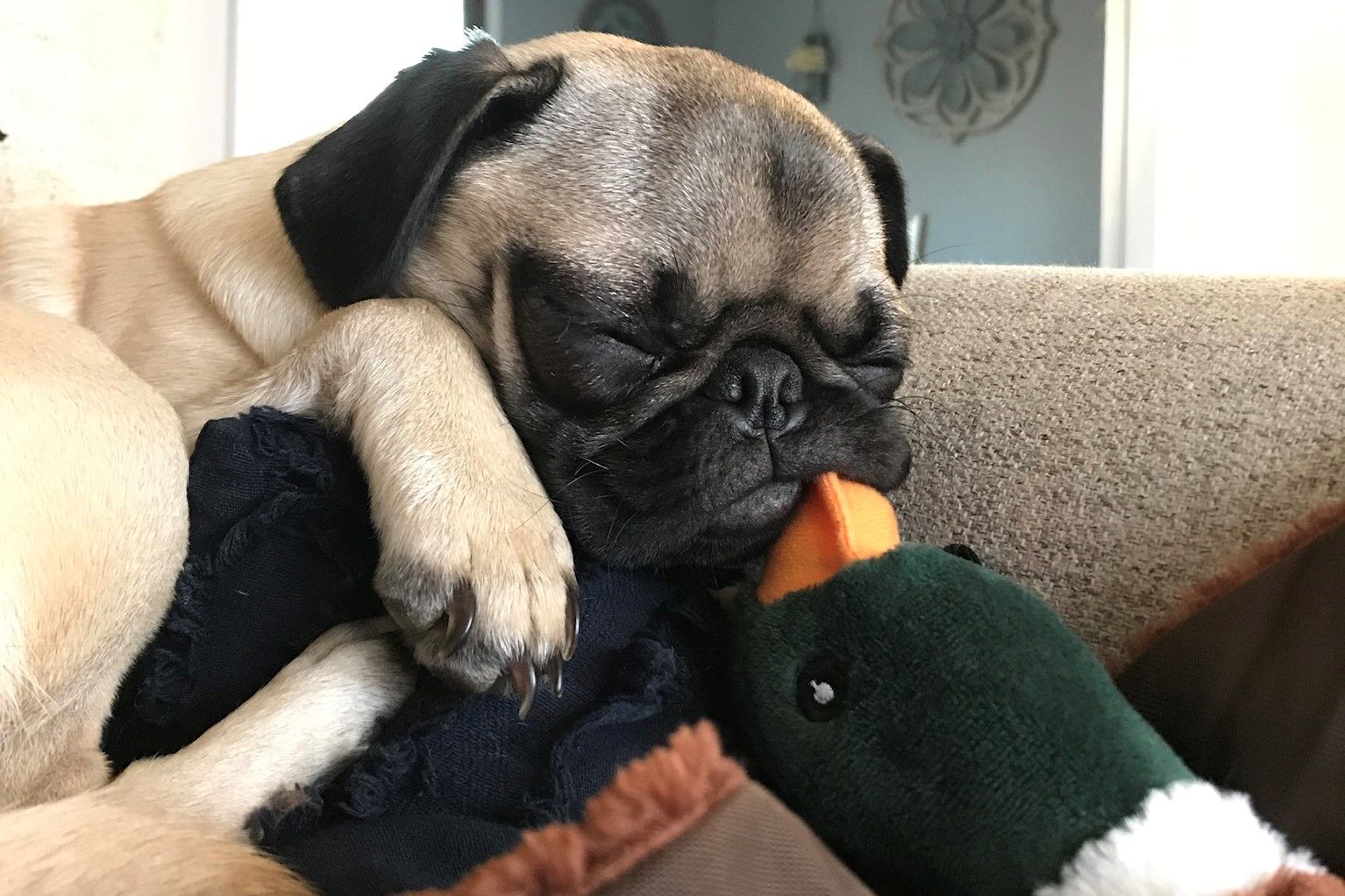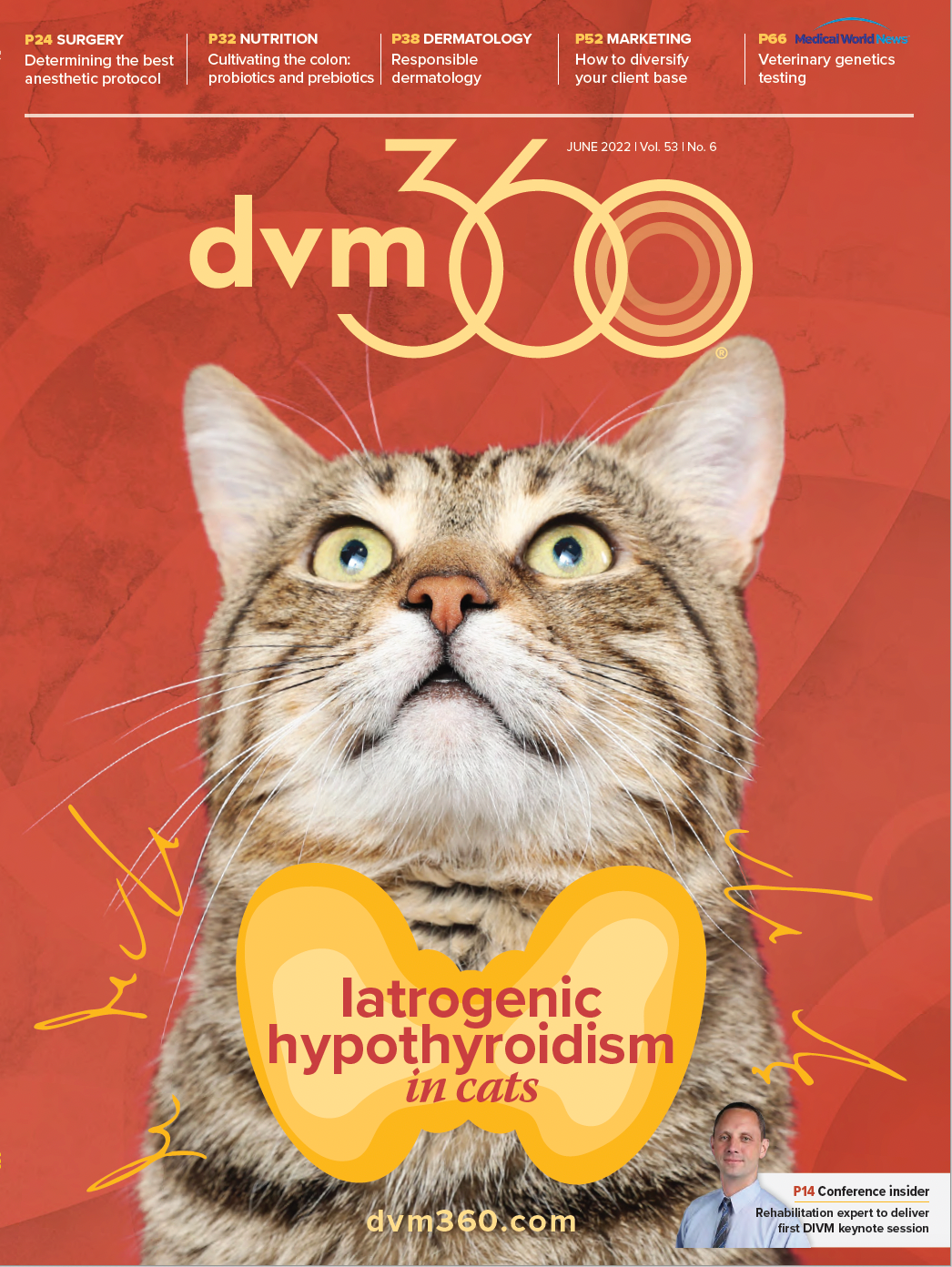Not so lucky pennies
In honor of National Lucky Penny Day, Pet Poison Helpline shared this warning on the dangers of pets ingesting coins in the May installment of Toxin Tails.
Pet owner Alyssa Thunder did not think twice when her pug Winnie the Pug vomited up a couple of coins. It is not uncommon for dogs to swallow things that they should not, so she was not very concerned at first. However, when Winnie was sick for multiple days, her concern grew.
“Dogs eat all sorts of things. When we found that Winnie had thrown up a few quarters and nickels I didn’t think it was that big of a deal,” said Thunder, in an organizational release, “Next, there were two pennies and a nickel. When she started bringing up bile two days in a row, we decided to take her to the hospital.”
Winnie the Pug ( Image courtesy of Pet Poison Helpline)

After she had been sick for about a week, Thunder brought her to the hospital. Acccording to the release, once at the hospital, a radiograph showed there were still a bunch of coins in her stomach.1 Winnie was then moved to PAW Health Network in Kronenwetter, Wisconsin, because the original hospital did not have a surgeon available to treat Winnie.
After finding more coins in her stomach, veterinary professionals began to suspect she was suffering from zinc poisoning. Pennies minted after 1982 contain zinc, which is highly toxic to dogs when ingested. According to the release, the main clinical signs of zinc poisoning are gastrointestinal distress with the possibility of ulceration and hemolysis.1 Other signs can include pancreatitis, cardiac changes, and possibly renal failure or hepatic damage.
“Once they confirmed that Winnie still had coins in her stomach, including pennies which contain zinc, it was critical that she get to surgery as soon as possible due to potential zinc poisoning,” said Renee Schmid, DVM, DABT, DABVT, a senior veterinary toxicologist at Pet Poison Helpline. “Winnie had clinical signs consistent with zinc poisoning including anemia due to hemolysis, pancreatitis, and severe GI distress."
"One of our most critical recommendations was to surgically remove the coins instead of recommending chelation, as chelation increases zinc absorption if the zinc-containing object is still present in the stomach or intestinal tract. Once the coins are removed zinc levels decrease quickly and chelation is usually not necessary,” Schmid explained.1
Winnie had to go through 2 surgeries, the first to remove the coins, and then following an x-ray, they had to go back in because it showed a final coin was still in her system. The second surgery showed surgeons that a penny was eroded by acid, so they had to scrape it out.
“She had to spend two nights in the hospital,” disclosed Thunder. “When she got home, she had to wear a cone, she wasn’t allowed to jump, and she was prescribed a number of medications. The good news is she’s back to her normal little self. We still have no idea where she found the coins. My dad rebuilds old cars, so we think she may have gone scrounging around and found some old coins in one of the cars that had something tasty spilled on them. Who knows?”
Reference
Winnie the Pug’s Unlucky Penny. Pet Poison Helpline. May 23, 2022. Accessed May 23, 2022. https://www.prnewswire.com/news-releases/winnie-the-pugs-unlucky-penny-301536553.html
